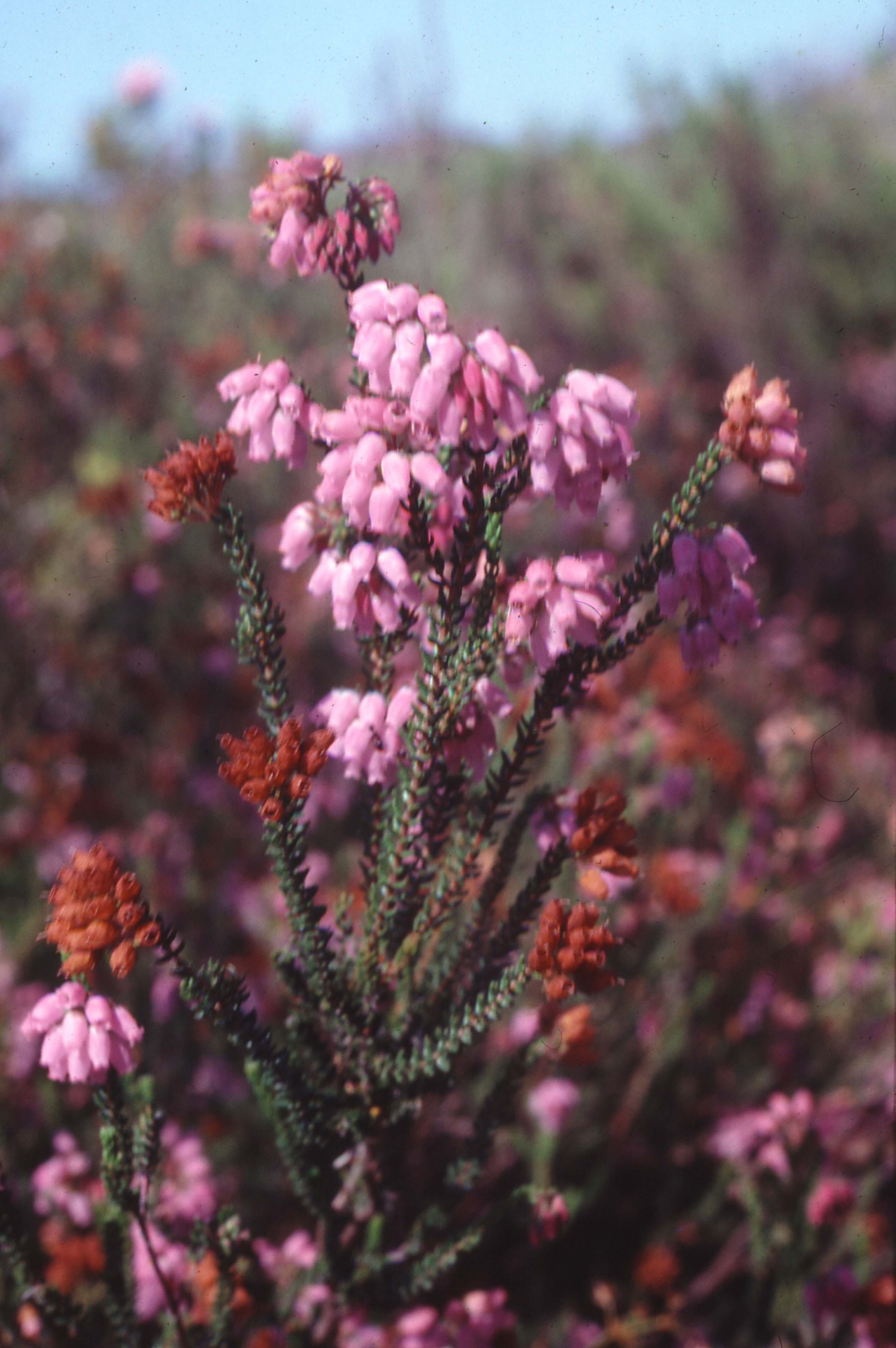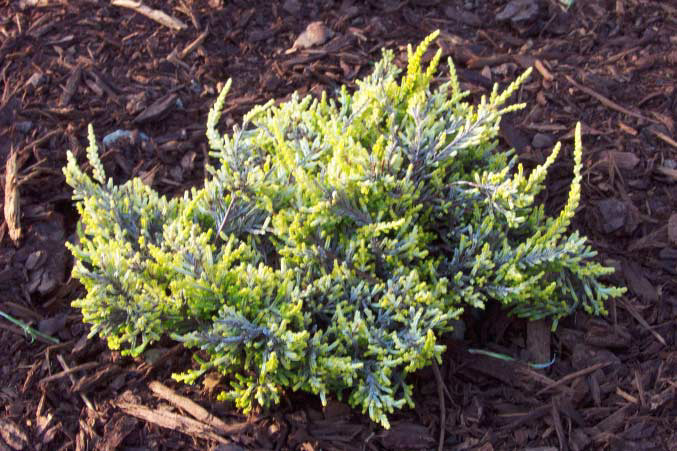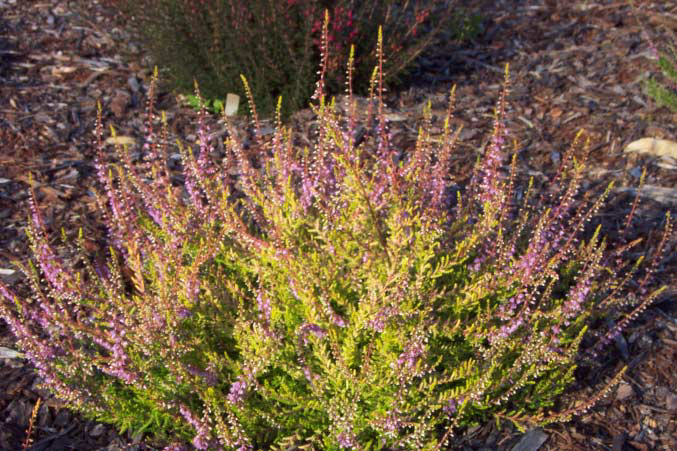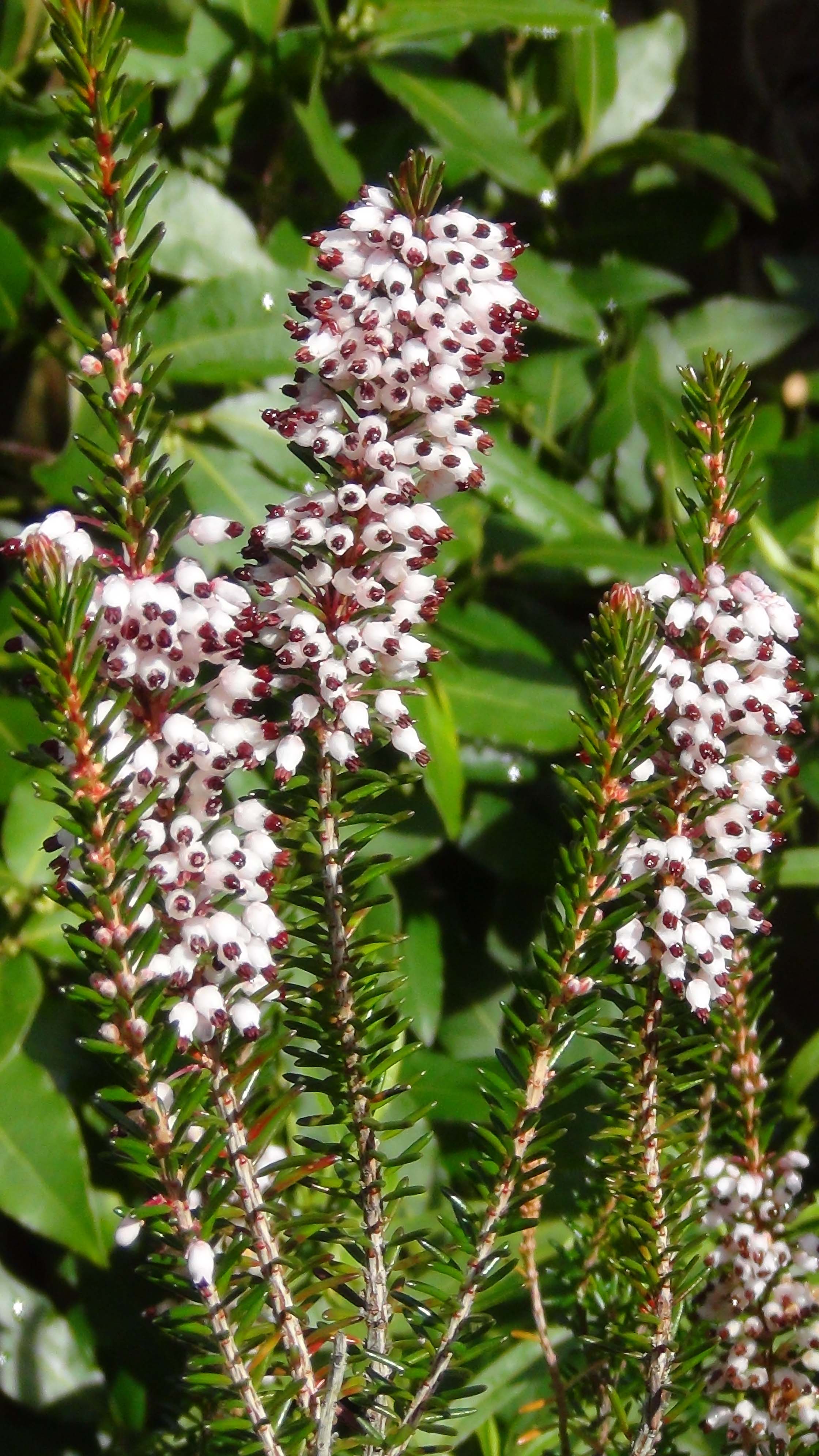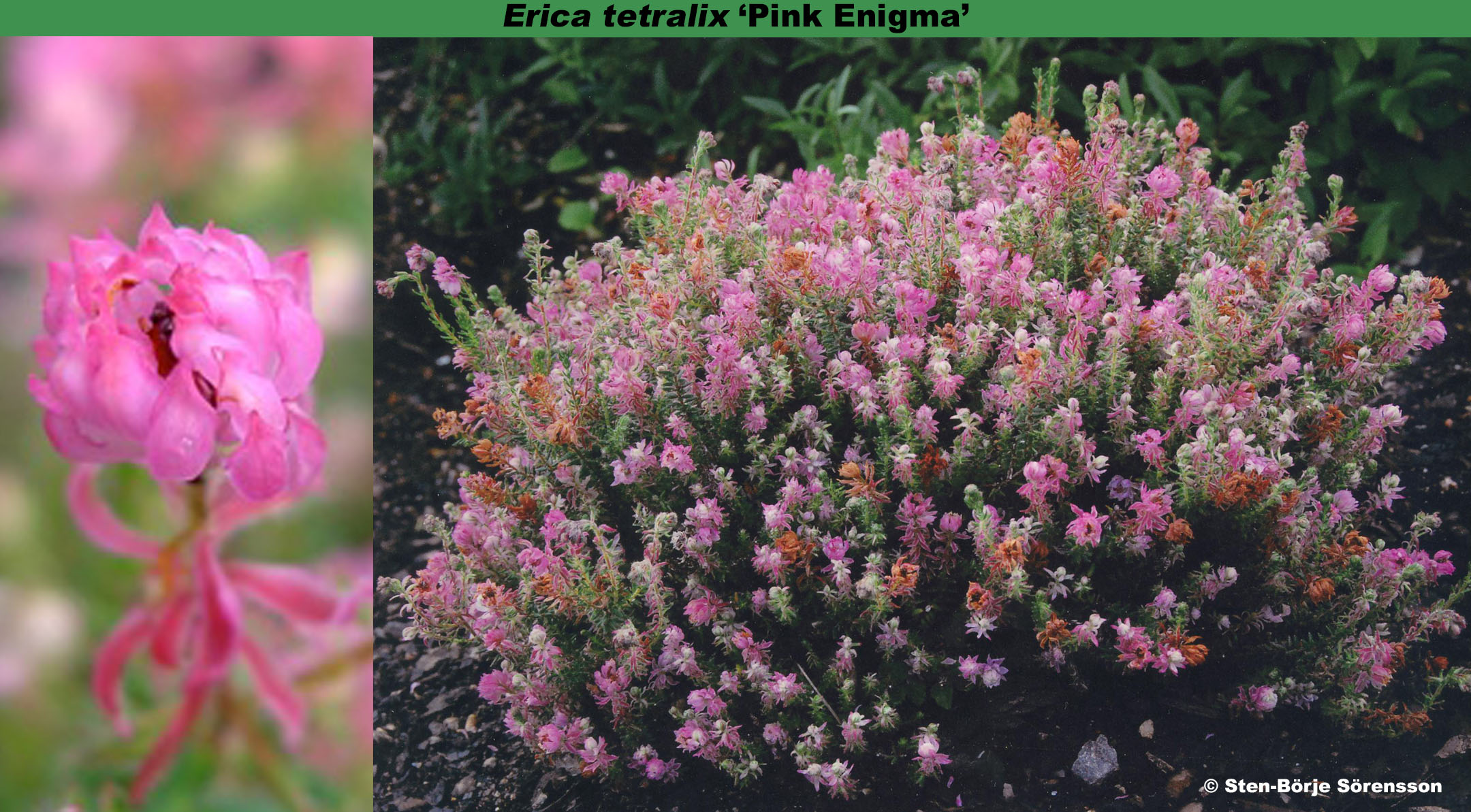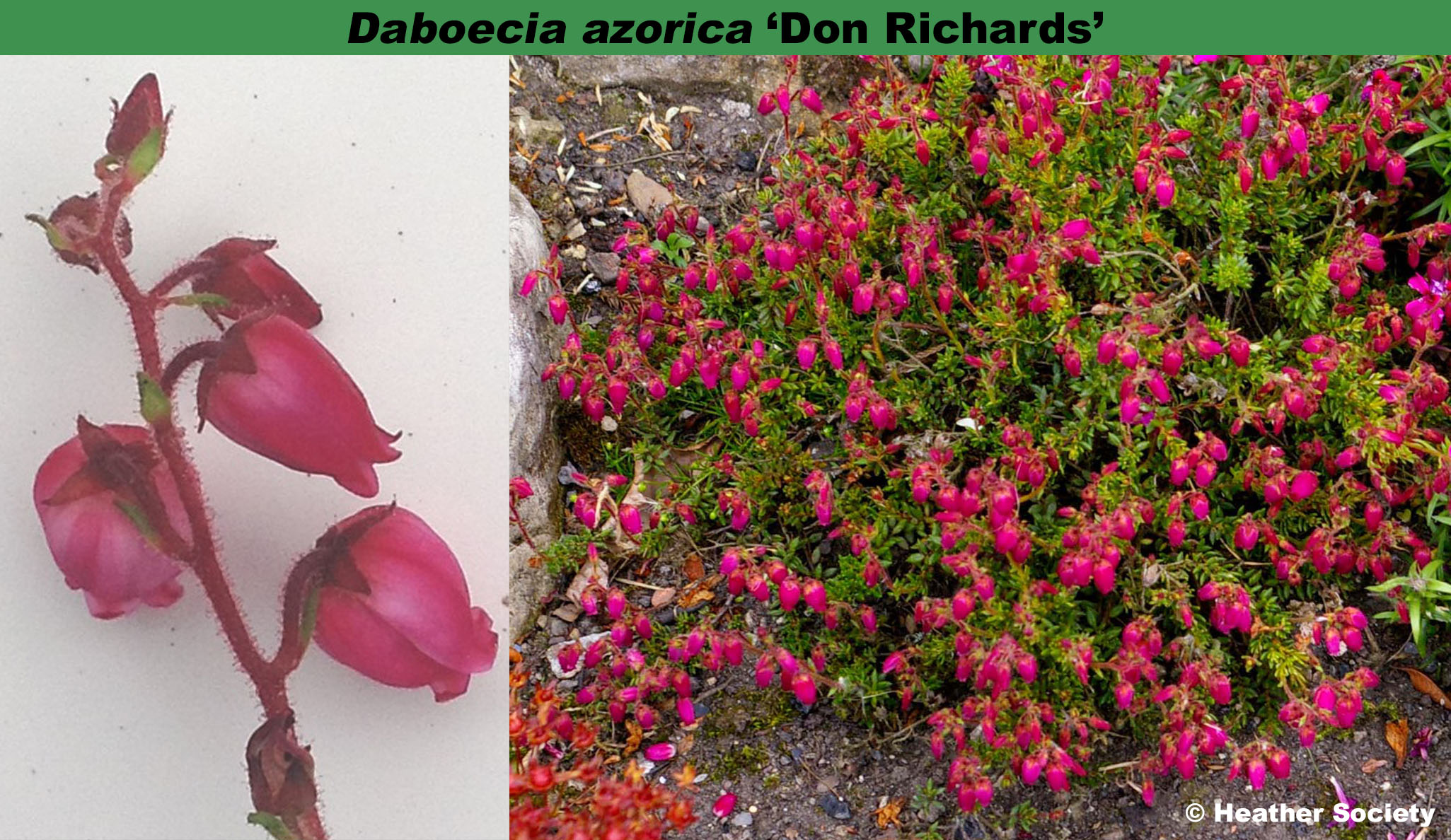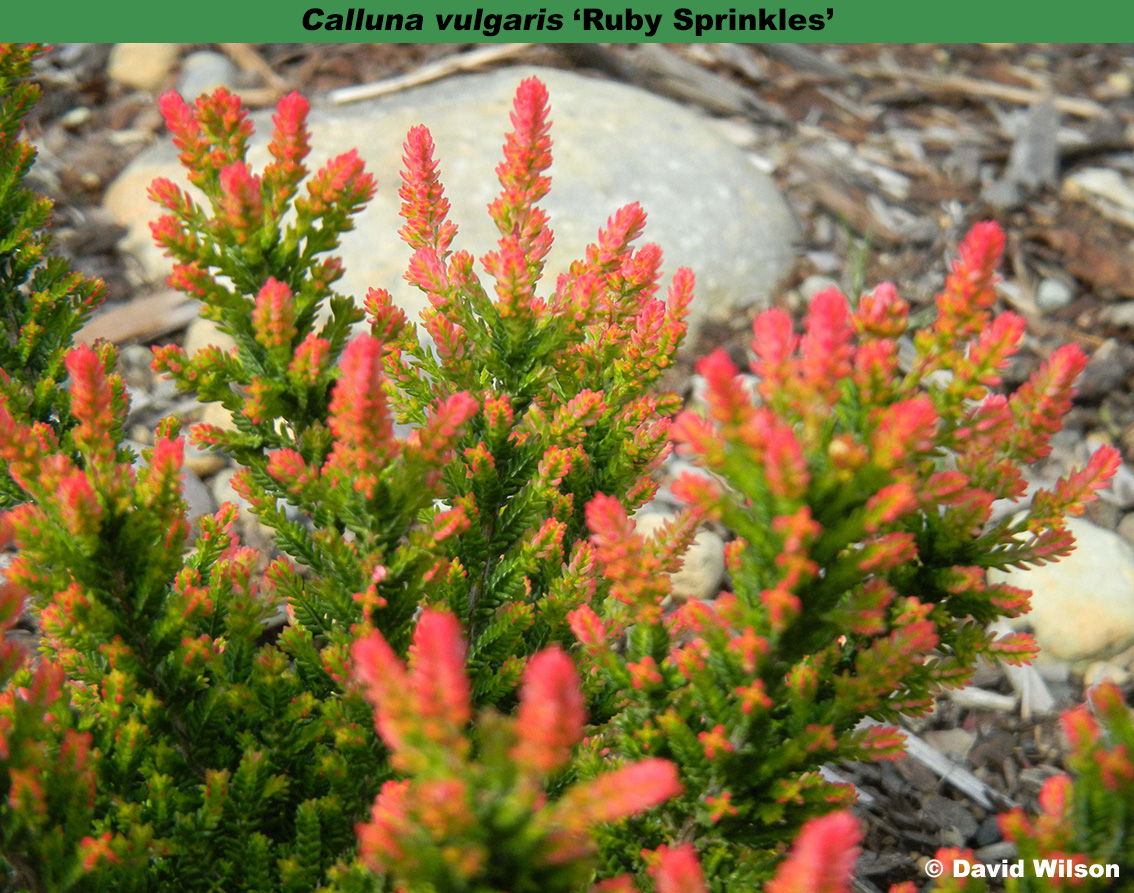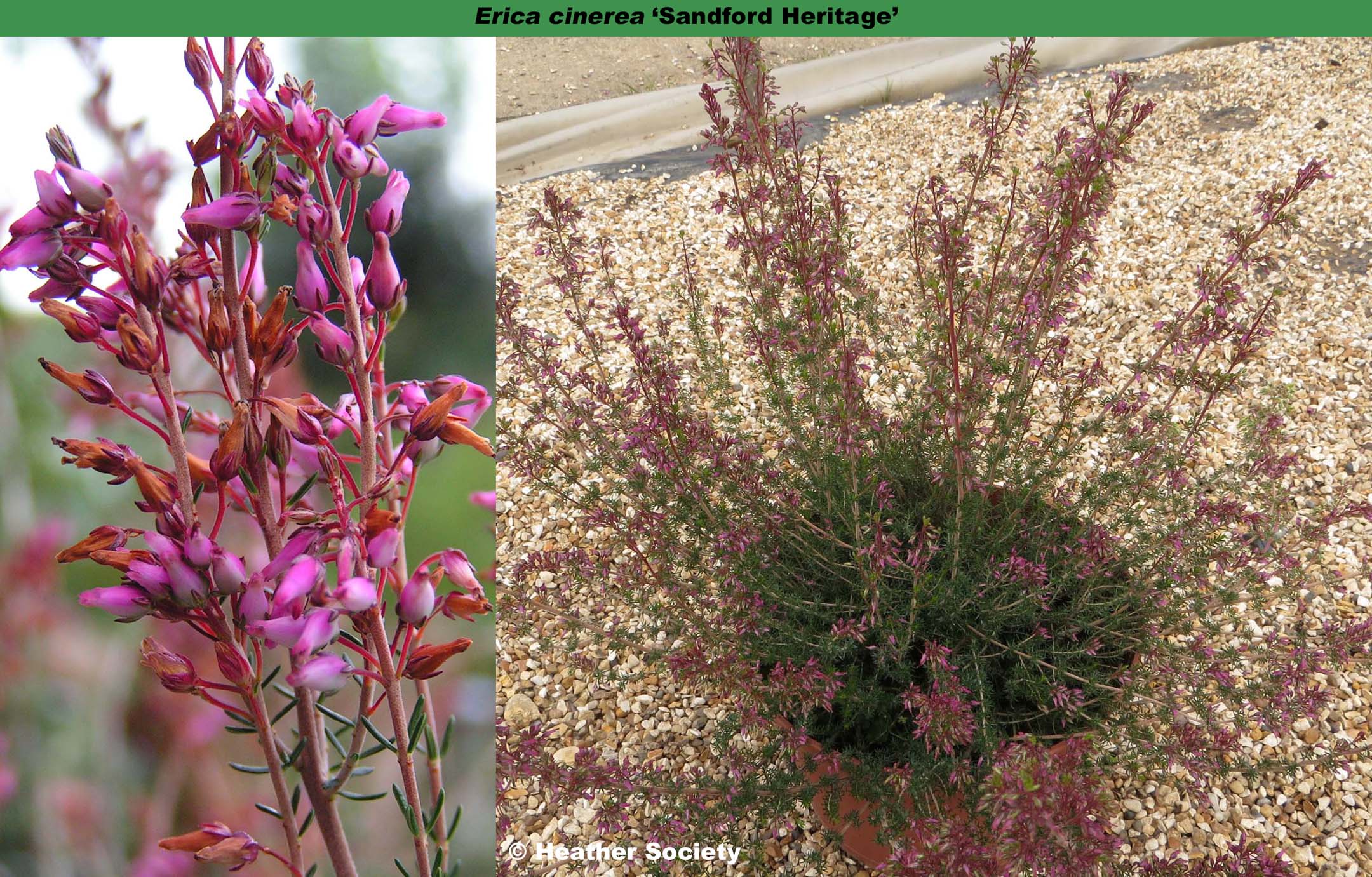Pink flowers; XI-I; foliage grey-green; habit loose open, height 100cm spread 75cm. Flowering is unreliable in a northern European climate and it’s hardiness is suspect. Of botanical interest.
Heathers
‘Valvinsan’
Flowers held erect at anthesis, urn-shaped, 8-1 0mm diameter, H12 (heliotrope); calyx dark red/ green; VII-X/XI; foliage green; habit broad erect, after 5 years (pruned) 30cm x 30cm. The erect flowers are of a colour that is more attractive than ‘Pink Blum‘.
A chance seedling found in 2001 in his garden, and selected by Jos Flecken.
Named by Jos Flecken after his grandchildren: Valerie, Vincent and Sander Palmen.
® D.2007:01 registered 4 September 2007 by by Jos Flecken, Kerkrade, Netherlands.
‘Yellow Steele’
Flowers white; VIII-IX; the foliage yellow. Introduced by Lieutenant-Commander (retd) R. M. Steele (Rose Bay, Lunenburg, Nova Scotia, Canada) before 1999. Originally named ‘Steele’ by G. &. E. MacKinnon (Waquoit, Cape Cod, Mass., U.S.A.), but that name is rejected.
‘Greta Gerticular’
Flowers lavender, VIII-IX; bright golden yellow foliage with red stems, acquiring more red in winter; height 12-16 cms, spread 25-40 cms.
‘John Tucker’
Flowers in 3s in leaf axils; corolla white, narrow-urceolate, to 4.5mm long, c. 2.5mm diameter (c. 1.5mm at throat); anthers dark brown, exserted a little; calyx and pedicel white; II-V; upright shrub, 0.5(-l)m tall; foliage glossy, dark green.Seedling raised probably in the late 1980s or early 1990s by John R. Tucker (d. July 2006) (Worthing, Sussex); subsequently propagated vegetatively.
The origin of the seed is uncertain: it was said to have come from South Africa, which is highly improbable. The plant was originally labelled “Erica longifolium”, but subsequently identified as Erica multiflora. Established here. Registered on 1 October 2006 by The Registrar, The Heather Society.
‘Pink Enigma’
Bushy dwarf shrub with upright shoots; foliage dark greyish-green; leaves usually in fours, broad, ovate, with a few long marginal cilia, sometimes with red-glandular tips especially those towards the apex of a shoot, otherwise upper surface glabrous, margins recurved, lower surface exposed, whitish green; leaves towards the tips of “abnormal” shoots may have pink tips or varying and increasing amounts of pink tissue resembling that of the corolla; in extreme examples, the upper portion of the shoots have no green leaves but have variously shaped pink, petaloid “bracts” which are longer and broader than the leaves; flowers may be formed and seem “normal”, or the flowers are grotesquely malformed; VII-IX. On shoots with flowers, leaves arranged in evenly spaced whorls of four, spreading, but becoming more widely spaced below inflorescence and also tending to become more erect and more appressed to the stem; flowers with densely hirsute ovary.
We do not know where or how this plant originated. Its known history commences when Brita Johansson was given a young plant by Jack Platt who, as past yearbooks show, was a very keen collector of new clones which he cultivated for a few years in his garden before replacing them with newer ones. Platt informed Mrs Johansson that he had obtained the plant from Ray Warner. Brita Johansson grew ‘Pink Enigma’ in her garden in Sweden, propagated it and passed a plant to Sten-Börje Sörensson who still cultivates it. It is apparently very hardy and was not affected by the extremely cold winter of 2010–2011.
® E.2011:01 registered on 17 September 2011 by Brita Johansson, Vargon, Sweden.
‘Don Richards’
Corolla crimson (H13, RHSCC 186A/71B), few hairs on the outside not gland tipped; V-VI (not repeat flowering); slow growing, fussy about growing conditions and location, but hardy.
This is a plant the Don Richards collected many years ago. Been growing for more that 15 years. JG
‘Ruby Sprinkles’
♤ Bud-flowering, mauve (H2); IX-XII; foliage summer green; new growth orange-red; habit upright, moderately vigorous.
Deliberately raised seedling from unnamed bud-flowering seedling pollinated by ‘Spring Torch‘, by David Wilson in 2005, selected in 2007.
® C.2010:05 registered by David Wilson, Chilliwack, British Columbia, Canada.
‘Sandford Heritage’
Flowers purple, densely clustered in fascicles on short lateral shoots; corolla small, obovoid, elongated to 5mm long, less that 1.5mm across towards base, sepals up to 8, stamens absent, style malformed and emergent; VII-VIII; foliage dark green.
Wild-collected; and aberrant form found on 28 September 2009 on Sandford Heath(SY 93727 90374), near Wareham, Dorset, by Dr. J. F. Wright; the original plant is still alive at that place, 2 october 2011.
® E.2011:02 registered on 4 October 2011 by Dr. J. F. Wright.
‘Olivia Hall’
Flowers in long racemes, single; sepals light green; corolla broad-campanulate, white in warm climates and indoors, otherwise pale lilac (H4, RHS CC 69D); anthers exserted, dark beetroot (H9); VIII-X; erect habit, up to lm tall; foliage mid-green (RHS CC 137B).
Wild-collected; found at Lara Bay, Antalya, Turkey, on 1 October 1978 by Mrs Olivia Hall (Alresford, Hampshire, England). Registered 10 October 1996: Mrs Olivia M. E. Hall, Domus, The George Yard, Alresford, Hampshire, England.
Named after the finder.

